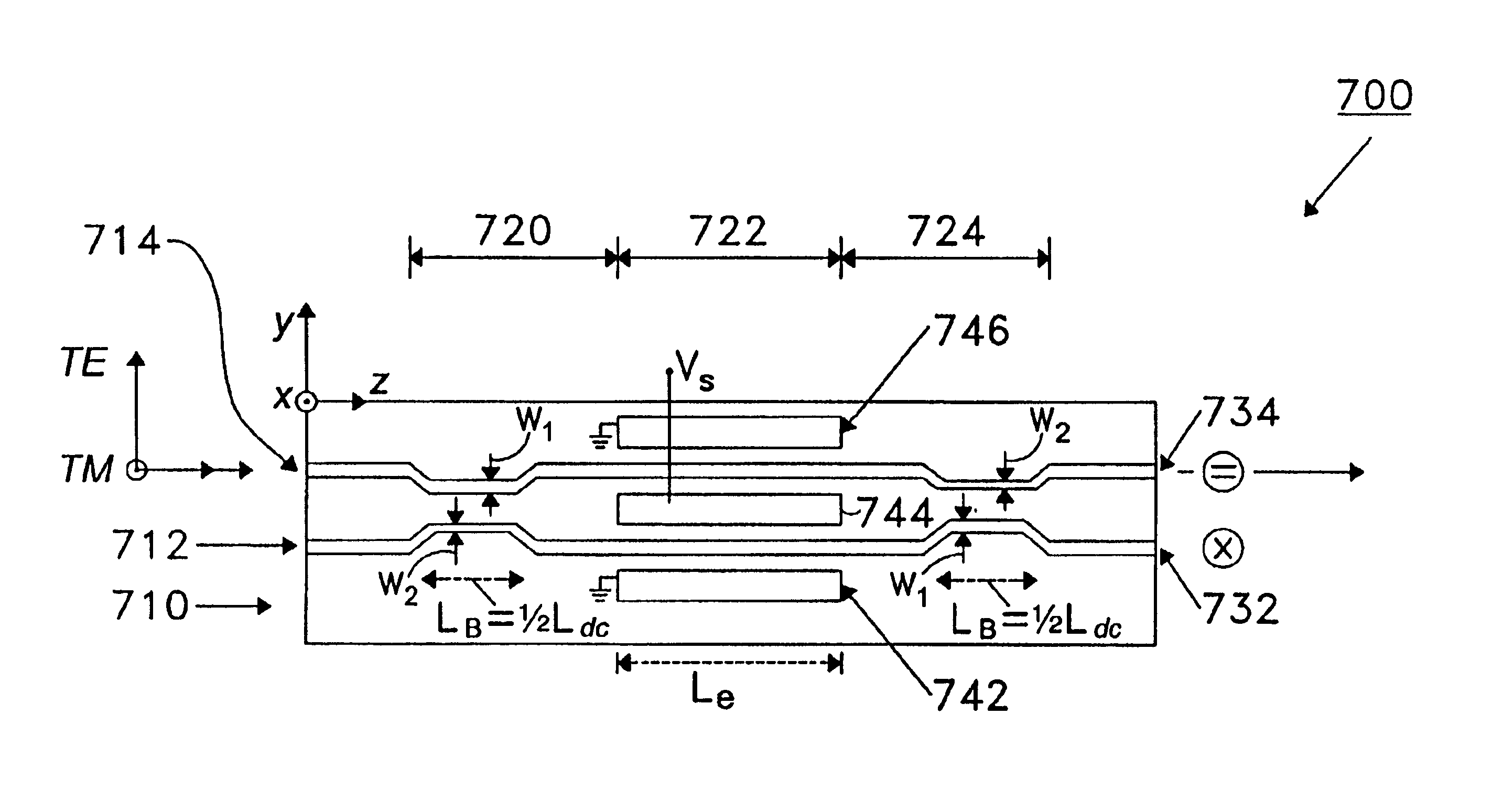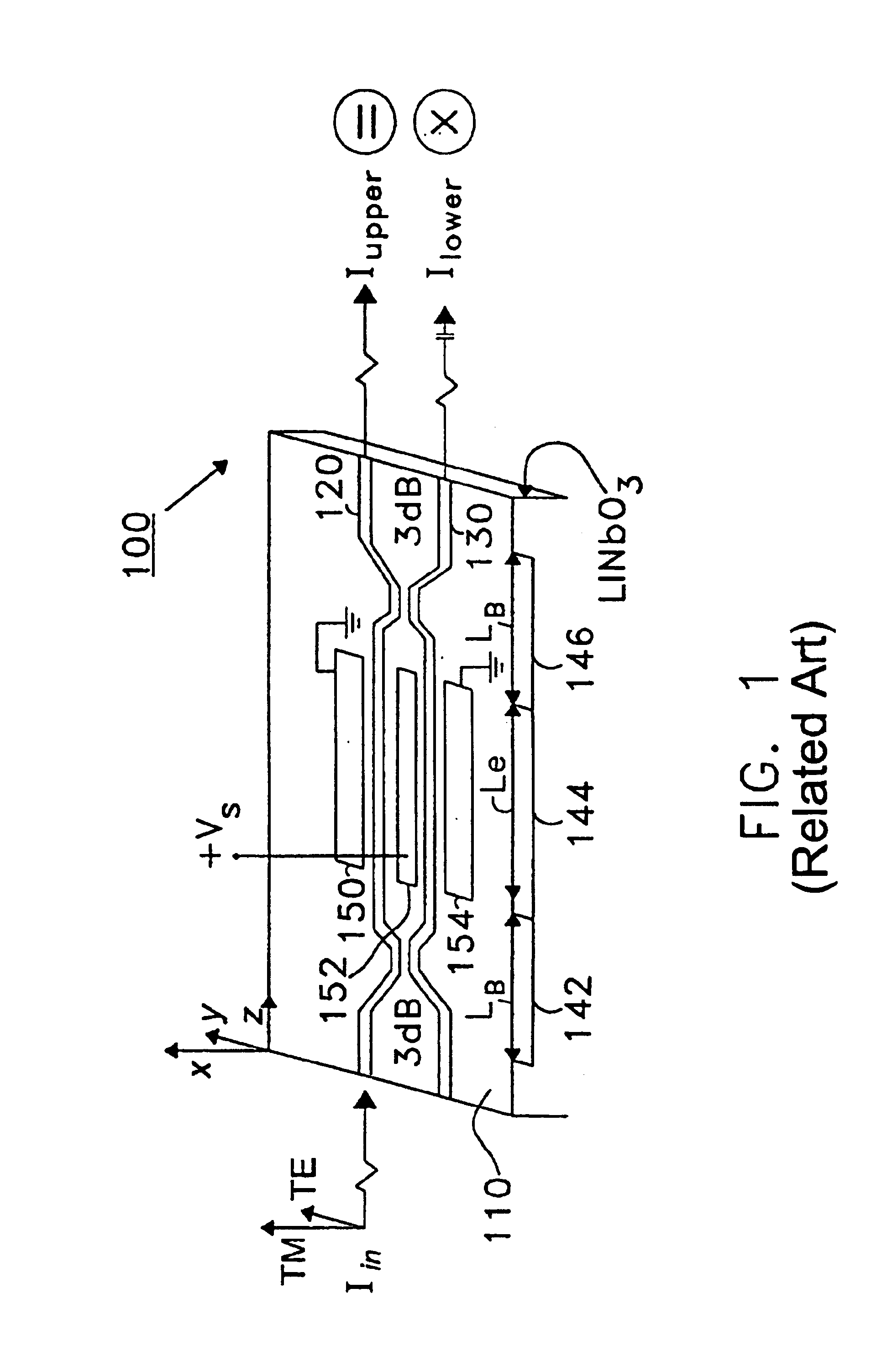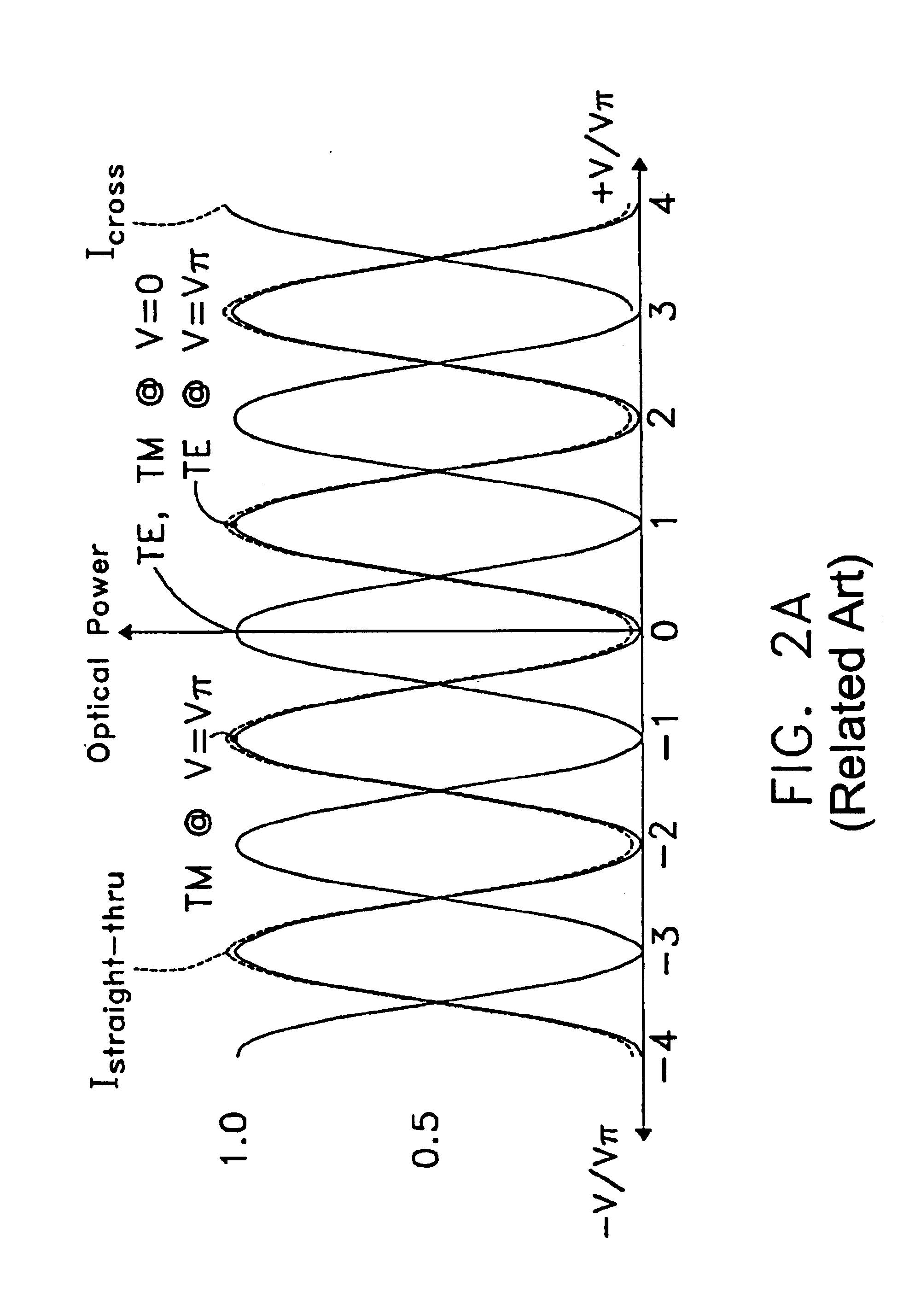Polarization independent broad wavelength band optical switches/modulators
a technology of broad wavelength band and optical switch, applied in the field of polarization independent broadband optical switch and switch, can solve the problems of optical switch defective, difficult to achieve precise length of 3 db coupler, and limited fabrication tolerances
- Summary
- Abstract
- Description
- Claims
- Application Information
AI Technical Summary
Benefits of technology
Problems solved by technology
Method used
Image
Examples
Embodiment Construction
[0049]FIG. 3A is a diagram that illustrates a first preferred embodiment of a broad wavelength band polarization independent optical switch, in accordance with the present invention. “Broad wavelength band” includes the range of wavelengths from at least approximately 1530 nm (nanometer) to at least approximately 1610 nm. The switch's functioning wavelength range includes the C and L bands, where the C band spans approximately 1530 nm to 1565 nm, and the L band spans approximately 1565 nm to 1610 nm. However, the switch's functioning is not limited to the wavelength range encompassing the L and C band, and the switch will function substantially below and substantially above both those bands, inclusively. “Polarization independent” means that the switch may effectively switch any polarization or all components of an optical signal. The first preferred embodiment of the optical switch is a polarization-independent, broad-wavelength band 2×2 switch using a balanced-bridge interferomete...
PUM
 Login to View More
Login to View More Abstract
Description
Claims
Application Information
 Login to View More
Login to View More - R&D
- Intellectual Property
- Life Sciences
- Materials
- Tech Scout
- Unparalleled Data Quality
- Higher Quality Content
- 60% Fewer Hallucinations
Browse by: Latest US Patents, China's latest patents, Technical Efficacy Thesaurus, Application Domain, Technology Topic, Popular Technical Reports.
© 2025 PatSnap. All rights reserved.Legal|Privacy policy|Modern Slavery Act Transparency Statement|Sitemap|About US| Contact US: help@patsnap.com



